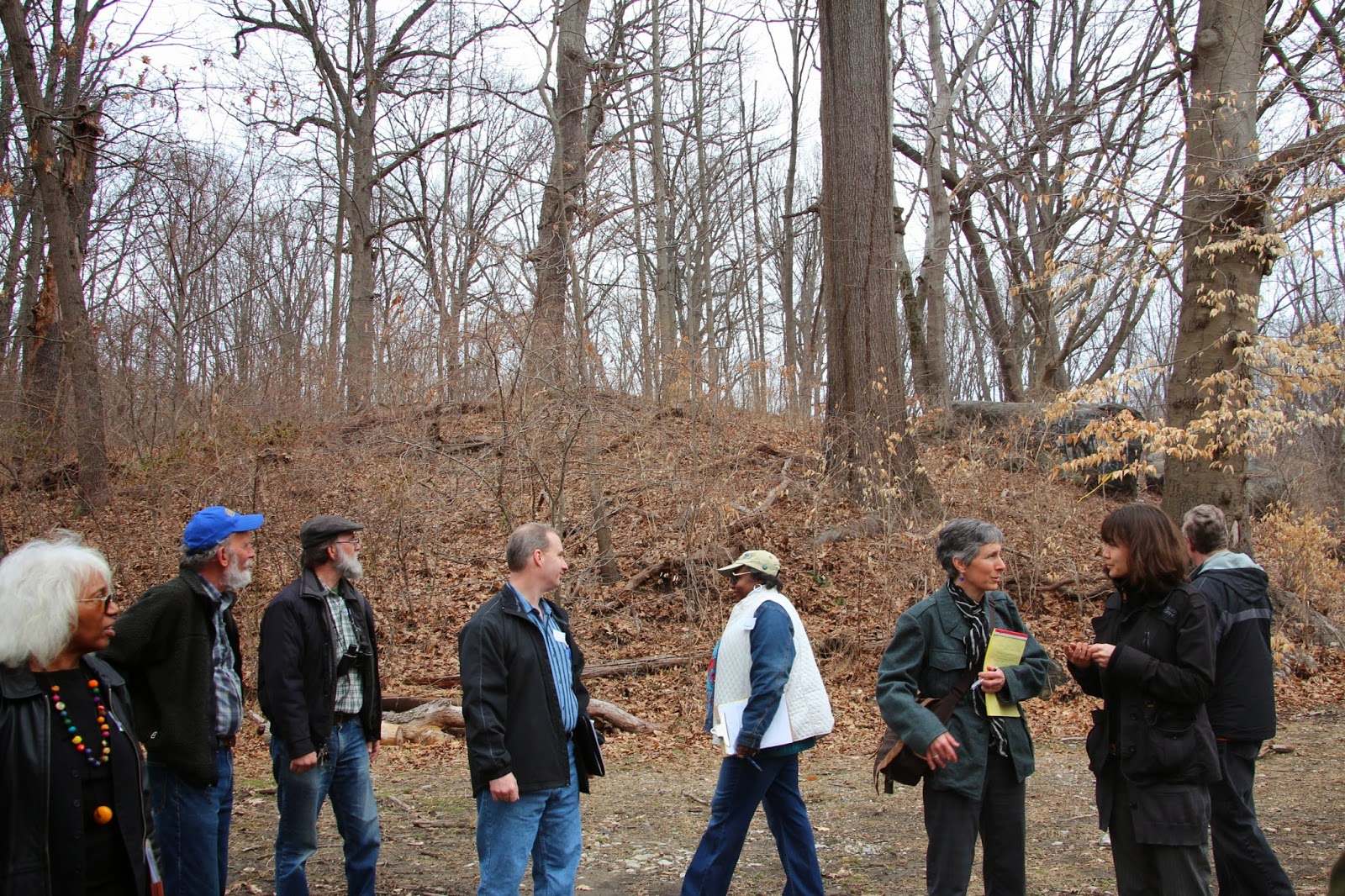 |
| Colleagues at the edge of the old growth |
 |
| Schist boulders weathered out of the hillside; some bear graffiti - hey, it's the city |
 |
| Weighing options for restoration |
 |
| The Big Tree |
 |
| Bocce 1; each tree is protected from deer with a mesh sleeve |
Despite a little bit of drizzle, it was good to get away from my desk for a few hours, walk in the woods and confab with some of my professional colleagues and friends.


6 comments:
I believe Ben Franklin was 55 two-hundred-fifty years ago, Scott. You don't think he was out in the forest planting tree seedlings, do you?
:)
Boy, that is one large red oak! My red oaks are 100-120 years old and are about half the size of that beauty. Sounds like a great way to spend an afternoon!
Packrat: I suppose there's a remote possibility that Ben could have planted that tree, but he probably had better things to do when he was 55 years old. Actually, there's a register of old trees in southeastern Pennsylvania (though I don't have a copy of it and I don't know if this tree is on the list). The register listed trees that were growing when William Penn received his land grant and that were still living. There must be fewer and few of the trees around each year.
Sounds about right, Carolyn. If your oaks are half the age of the Big Tree, they should be about half the size, too. It was an impressive tree. It looked like a wolf tree to me--a big, broad-crowned open-grown tree (probably left to shade cows) upon which regrowing forest had encroached.
That is a big, old tree. It reminds me of some of the trees my father and I saw when we canoed up the Oostanaula River here in Rome about 35 years ago. The trees were in a narrow strip right by the river, and I thought they would stay there for many more years to come. Of course in the next few years they were cut for development.
Isn't that incredibly disheartening, Mark, especially since "your" trees were growing in the riparian zone where development shouldn't be occurring anyway.
Post a Comment